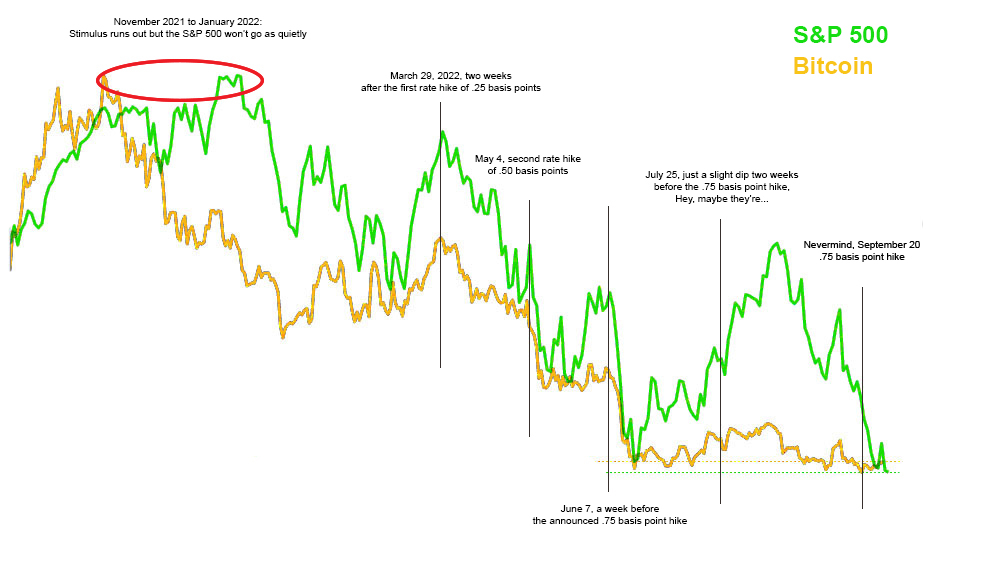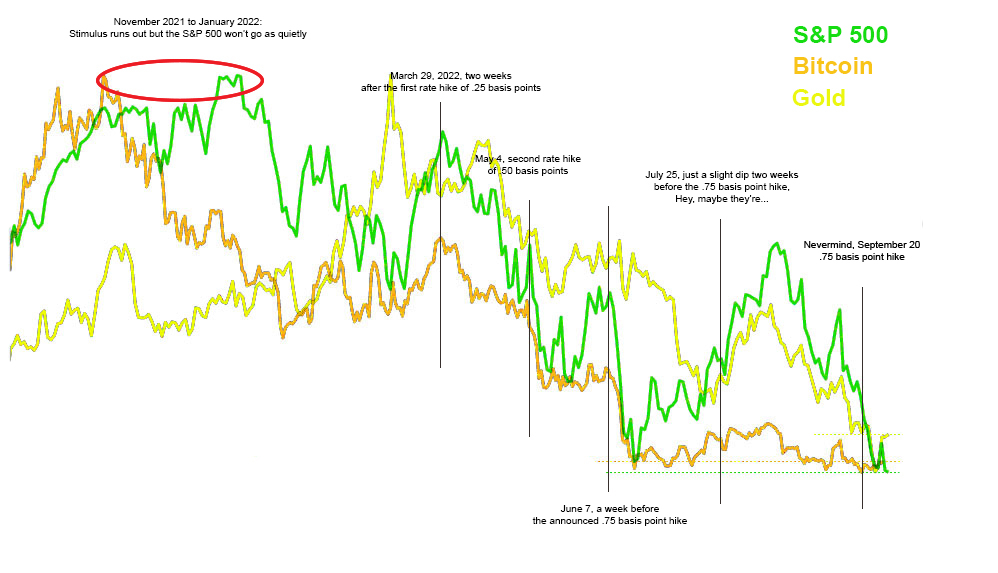Trump allows Nvidia to ship H200 chips to China with 25% tariff
A lot is being said these days about crypto. One thing we can't seem to get enough of is charts. Perhaps no different than trying to forecast the rain with chicken bones, we're looking to technicals that normally only serve intraday traders to get an idea of where and when the next big move in crypto is.
Of course, just as chicken bones should be laid to rest instead of used as a tool to forecast the weather, so too do intraday charts have a purpose. They have several. But telling the whole story isn't one of them.
There seems to be a bit of consensus that crypto will crash. More are saying that losses are coming than not. For as bullish as he is, analyst Edward Moya presents us with some interesting choices of wording:
"Tech stocks were up earlier today, showing you that correlation with crypto remains intact. Bitcoin won't be trading on its own fundamentals overnight, but it is starting to show some signs of resilience here."
It's not trading on its fundamentals, nor can the intraday charts help us... so how do we know what's coming? Believe it or not, the answer is in a chart. I will use "crypto" and "Bitcoin" interchangeably since every other coin still has ways to go from decoupling from Bitcoin.
We've heard plenty about the correlation between crypto and stocks. "They're not meant to be correlated." "The correlation shows crypto isn't a hedge." So on and so forth.
But it's not that crypto is correlated with stocks so much as the markets are correlated with the Federal Reserve. The Federal Reserve, in case anyone has any doubts, decides where the markets are going. Let's check what's going on with this correlation.

If that doesn't look like a tale of the Fed dictating where the markets go, I don't know what does. One thing gold investors can't be faulted for is not understanding the importance of the Fed's tampering with the markets. Perhaps because so many crypto holders are new to investment, it hasn't yet entered the general sphere of understanding.
To those who might be unfamiliar, gold is supposed to be the most uncorrelated asset. Indeed, it has no counterparty risk nor issuer, mint aside. But the whole point of gold investment, for many, is that gold isn't going to go along with other assets and currencies and lose value due to correlation.
When gold developed a correlation with stocks, abandoning the traditional inverse one and moving up together, many sang praises. "It's strong enough to do that?"
Gold is indeed on solid footing. But what does the uncorrelated asset look like when pitted next to Bitcoin and stocks?

Here, we have three asset classes that are essentially a hedge against each other. The correlation becomes all the more significant as the Fed's rate hiking schedule intensifies. By the time we get to .75 basis points a hike, which is historically negligible, the three are moving up and down together.
One thing that gold investors can be faulted for, however, is focusing too narrowly on gold in U.S. dollar terms. It's an understandable folly, former dollar tether and all. But in doing that, they'll ignore that gold is priced in individual currencies differently.
To Japanese investors, gold hasn't been underperforming as it has to U.S. ones. They've gained 68% since 2019 due to yen depreciation, compared to the American gold investor's "measly" 27% gain.
Why is this important? Today's news on Bloomberg tells us that the European Central Bank will move into October with a hiking schedule just as aggressive as the one the Fed has been on so far this year.
So while we are only "expecting" another rate hike in the U.S. before some respite until 2023, there is no respite to be had in Europe. And, as you know, Europe is right behind North America regarding crypto consumption.
So when the ECB hikes rates and pulls money out of the pool in October, will we blame candlesticks or understand the fairly simple drivers behind crypto losses? The formula is indeed straightforward. While few dare make a bold crypto prediction, especially over the longer term, I'll do just that:
- The crypto market can't recover until Western central banks stop hiking rates
- The crypto market recovery will only happen when there is either a complete cessation of monetary tightening or an introduction of monetary easing
That's not as enticing to hear as wild speculation, perhaps. It doesn't give us the room to guess whether holding $20,000, $22,000, or any other level is a reversal signal. But it's the economic reality. The sooner we accept it, the better we can play the market as long-term oriented investors.
I doubt any crypto investor doubts that tokens will appreciate tremendously in the future. It's the when that concerns us all. Yet the when is laid out in detail. The Fed, and to a degree the ECB, decide when we'll start seeing a real retracement. Let's be fair: until there is a significant move to $68,000, the crypto market isn't in recovery mode.
It's also worth mentioning that central banks, especially the Fed, view reneging on their hawkish policy as a form of extreme concession. Even if a recession hits the U.S., they're likely to try and avoid quantitative easing to look less wrong than they are.
As you can see above, the road for crypto over the past year has been a wanting one for the short-term investor. Long-term ones probably enjoy these valuations quite a bit, knowing how untenable central banks' hawkish positions are.
